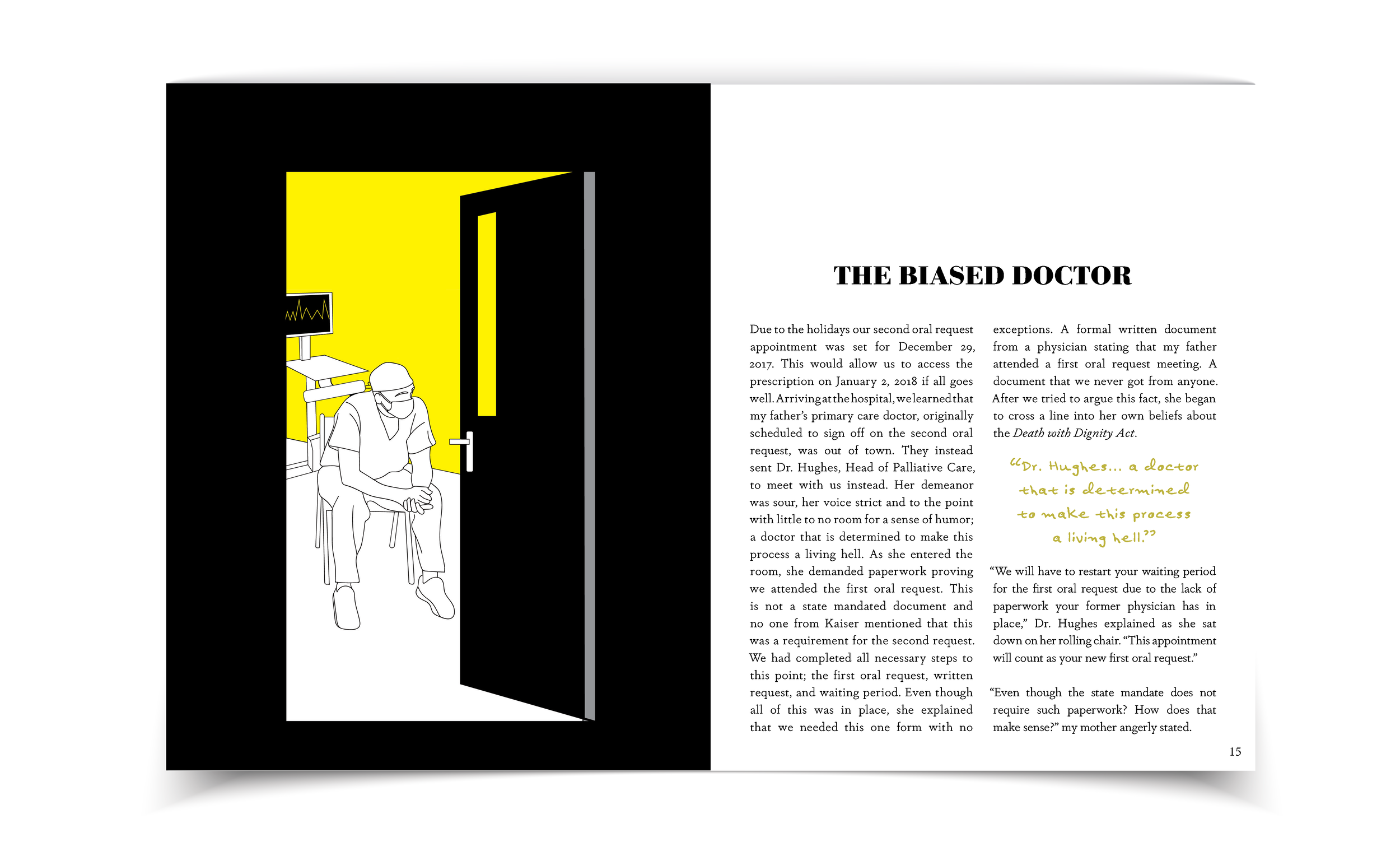Anniston Craddock
CONTROL
Reflecting on Death with Dignity
The Die with Dignity Act, developed in 1993, provides terminally ill individuals access to prescribed lethal medication.[1] This medication can be self-administered in order for the patient to die on their own terms and remove all forms of suffering for both the patient and the family. Numerous issues are encountered during the regulations of the act, both medically and emotionally. These restrictions leave individuals to die in the manner in which they were trying to avoid. Can the medical field improve this process and eliminate this act's stigma, or will this never be a viable option for terminally ill patients and their loved ones? This thesis extensively dissects major issues through the regulation process, such as waiting periods, paperwork, bias doctors, and the emotional and physical labor of taking the prescribed dosage of medication.[2] These major issues can leave a patient with no choice but to die in the manner they were trying to avoid. New solutions are introduced in this thesis to increase the success rate nationwide and spread awareness of the necessities of The Die with Dignity Act.
[1] Bushong, S. K., & Balmer, T. A. (1995). Breathing life into the right to die: Oregon's death with dignity act. Issues in Law & Medicine, 11(3), 269.
[2] Westefeld, John S., Alissa Doobay, Jennifer Hill, Clare Humphreys, Riddhi Sandil, and Benjamin Tallman. "The Oregon Death with Dignity Act: The Right to Live or the Right to Die?" Journal of Loss & Trauma 14, no. 3 (2009): 163.
The Book: A Personal Story
My father, Matthew Craddock, was diagnosed with stage four colon cancer in 2012. When his terminal illness became more aggressive in 2017, he decided to start the process of the Death with Dignity Act (DWD). The book Control: Reflections of the Death with Dignity Act explains the flawed process my family experienced during this time. Through hardships like strict regulations and bias doctors, my father was unable to successfully complete the DWD process. I hope this book informs my audience on the necessity of this Act for terminally ill patients across the nation. After reading the book, I want individuals to set aside their own biases and look to help support this act in order to make it more accessible in the United States.
Below is highlights from Control: Reflections of the Death with Dignity Act. The entirety of the book can be found by pressing on the bottom below!






